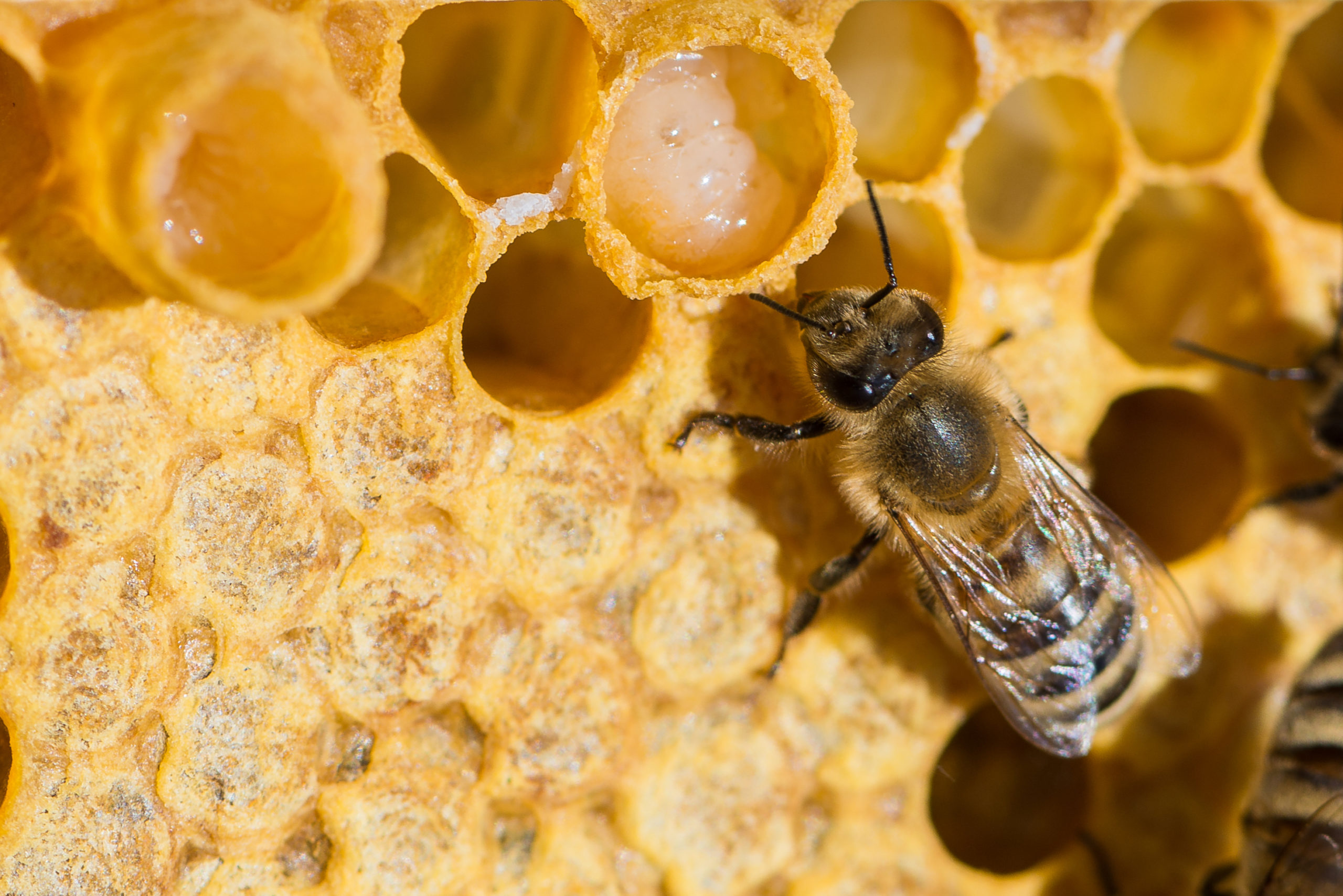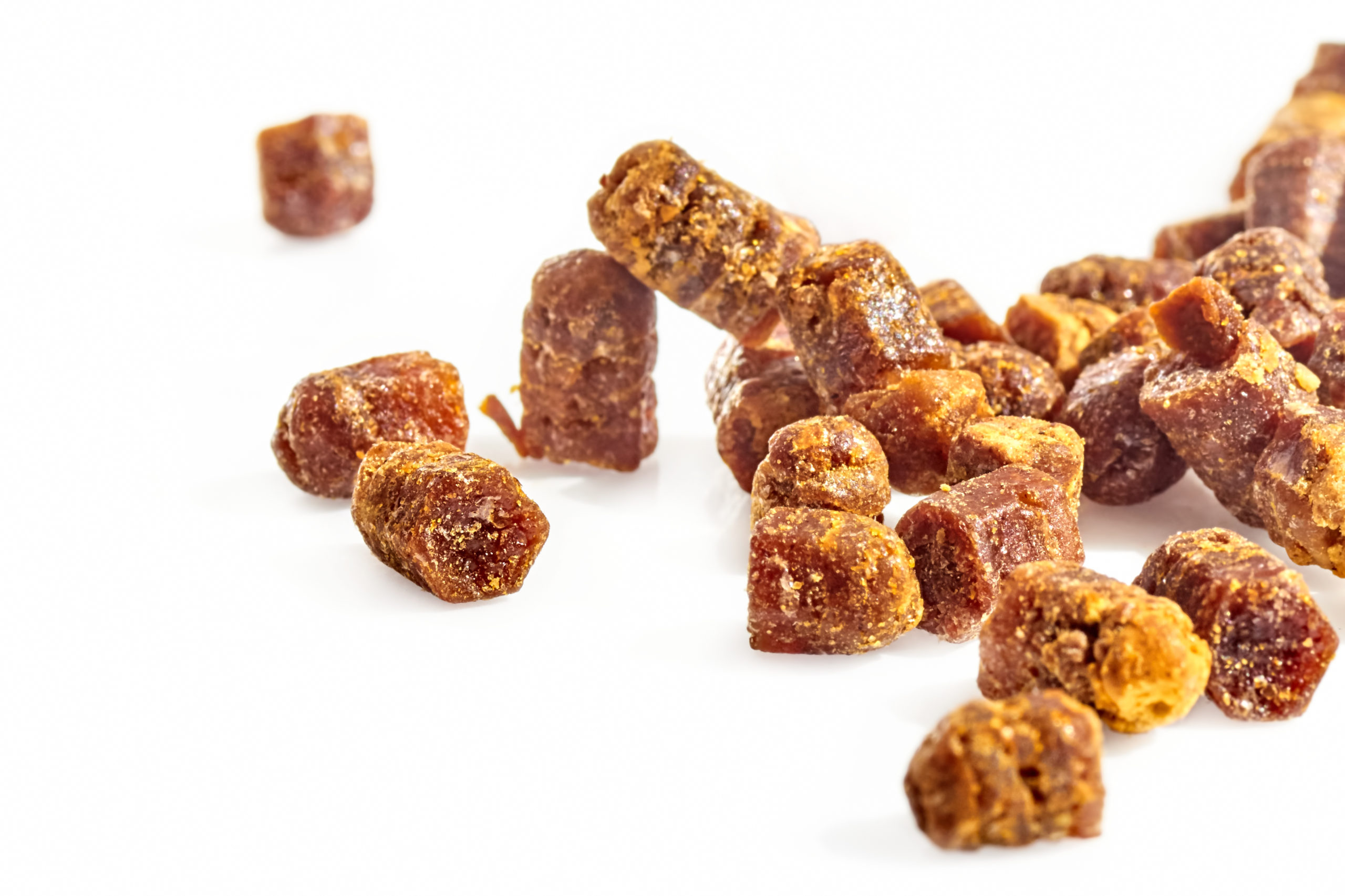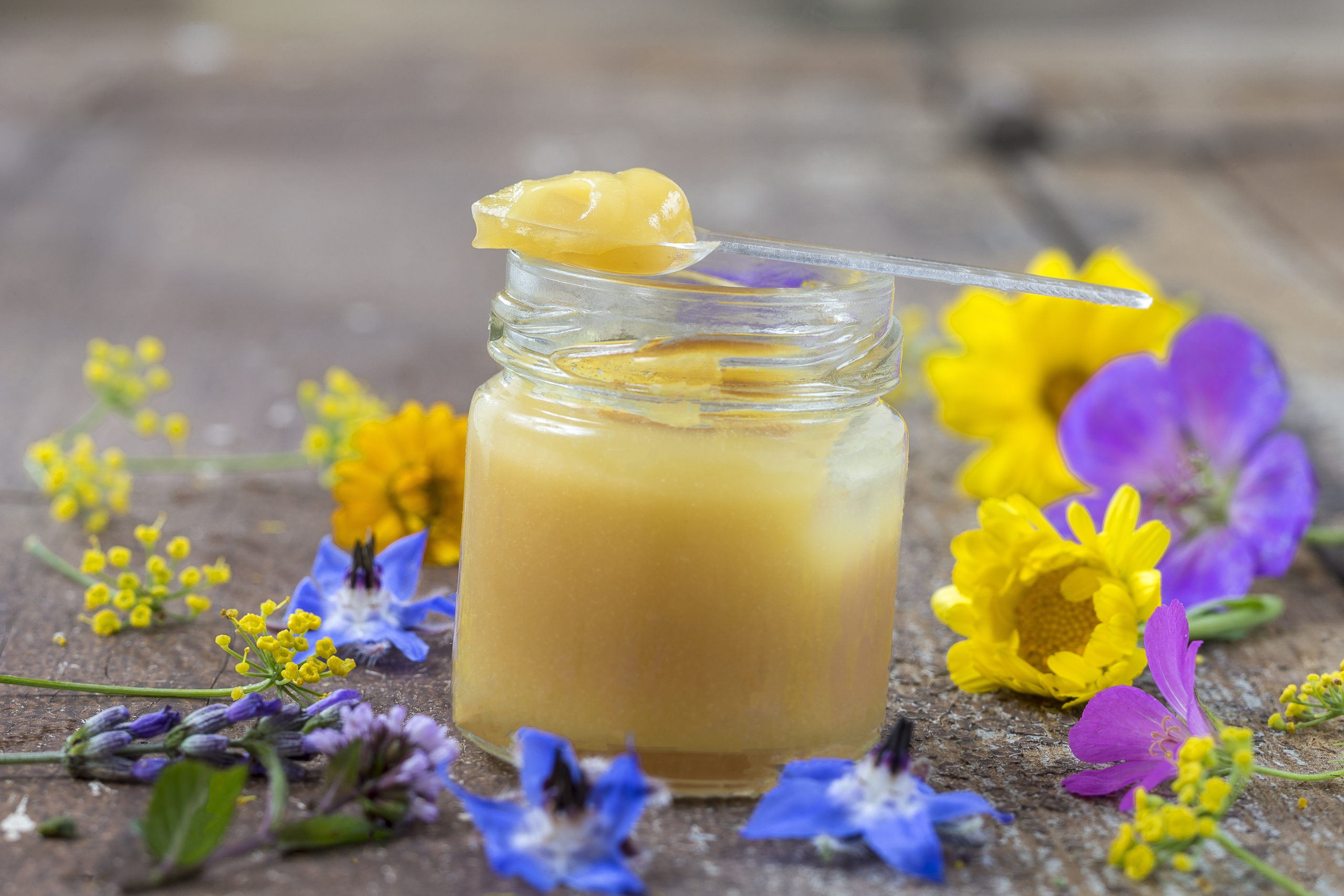Royal Jelly – The Cuisine of Queens
Royal Jelly – The Cuisine of Queens
What is Royal Jelly?
Royal Jelly is a substance excreted by the hypopharyngeal and mandibular glands in the heads of worker bees. Sometimes called “bee milk” due to its milky-white appearance, the gelatinous liquid is primary made of water with a combination of sugars, proteins, amino acids, lipids, vitamins, and minerals. When bee larvae are laid in their honeycomb cells, the rest of the cell is filled with Royal Jelly with which they grow inside similar to inside, similar to amniotic fluids for humans, until they metamorphose into a full-grown bee.

Royal Jelly vs. Bee Bread
While the honeybee larvae feed on the Royal Jelly prior to metamorphosis, afterwards, it is no longer fed to the majority of the bees. The exception to this rule is the Queen Bee, who will continue to feed on the “royal” substance throughout the rest of her life while her worker counter parts switch to another dining option called “bee bread.” This bee bread is a combination of fermented pollen and honey and is shaped like hexagonal cylinders.
It was originally hypothesized that it was a lack of the coveted Royal Jelly that stunted bees’ reproductive systems turning them into worker bees. It seemed Royal Jelly provided queens with abundant fertility and increased life spans. However, recent research has revealed that it is not the exclusive diet of Royal Jelly that causes these “royal” changes, rather, it is the lack of consuming bee bread. The consumption of bee bread actually seems to be a sort of “nutritional castration” that stunts worker bees’ reproductive abilities and differentiates them from the Queens.

Humans Using Royal Jelly
We harvest and eat honey… so why not try Royal Jelly as well, right? Well, there is quite a bit of debate surrounding this.
Because Royal Jelly was originally attributed to Queen bees’ fertility and longevity, it was assumed that it contained special properties that promoted these functions. As such, it began to be marketed, sold, and utilized by people to try and illicit these effects. However, both the initial reasoning behind the use of the Royal Jelly has been overturned by further investigation into honeybee growth, and there has not been a lot of research on whether it can produce any of these desired results in humans when taken regularly.
In animal trials there was strong evidence suggesting it had pharmacological effects on antitumor, anti-inflammatory, antibacterial, antioxidant, anti-allergic, antihypertensive, and anti-aging properties. And in a new double blind, randomized placebo-controlled human trial with a minimal sample size, results suggested that, following 6 months of regular Royal Jelly consumption, there was notable improvement in glucose tolerance, erythropoiesis (the production of red blood cells), and mental health. However, the researchers of this trial concluded that “a randomized controlled trial with larger number of subjects will be necessary to further verify the effects of Royal Jelly in more detail.”

Citations
Hanson, J. Ph D. (2016) How Do Bee’s Make Honey?, It’s Okay To Be Smart. YouTube. Available at: https://www.youtube.com/watch?v=nZ1EjDLJCmg (Accessed: June 2020).
Identifying the Queen Bee (2015) Forest Farming. YouTube. Available at: https://www.youtube.com/watch?v=O-oGdTYrJEI (Accessed: June 2020)
Mao,W., Schuler, M. A., and Berenbaum, M. R. (2015) “A Dietary Phytochemical Alters Caste-Associated Gene Expression in Honey Bees,” Science Advances, 28 August.
Morita, H., Ikeda, T., Kajita, K., Fujioka, K., Mori, I., Okada, H., Uno, Y. and Ishizuka, T. (2012) “Effect of royal jelly ingestion for six months on healthy volunteers,” Nutrition Journal, 11(1). doi: 10.1186/1475-2891-11-77.
Pearson, G. (2015) Royal Jelly isn’t what makes a queen bee a queen bee, Wired. Conde Nast. Available at: https://www.wired.com/2015/09/royal-jelly-isnt-makes-queen-bee-queen-bee/ (Accessed: October 12, 2021).

